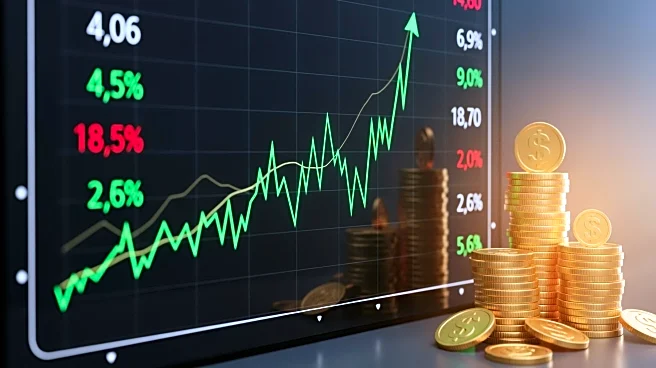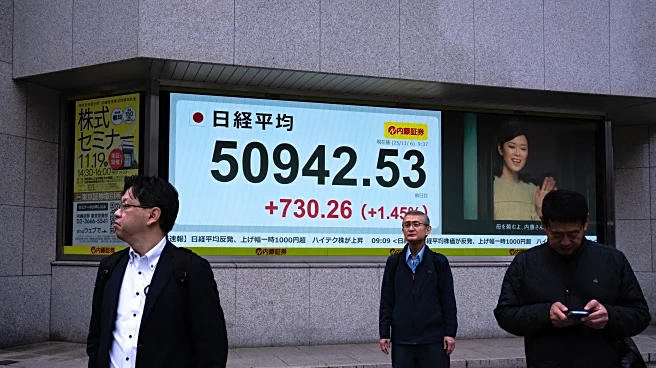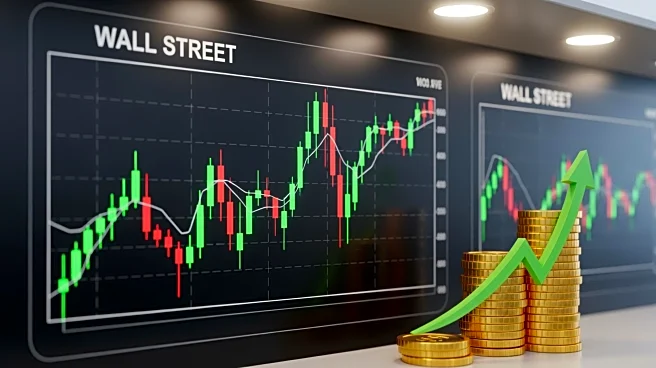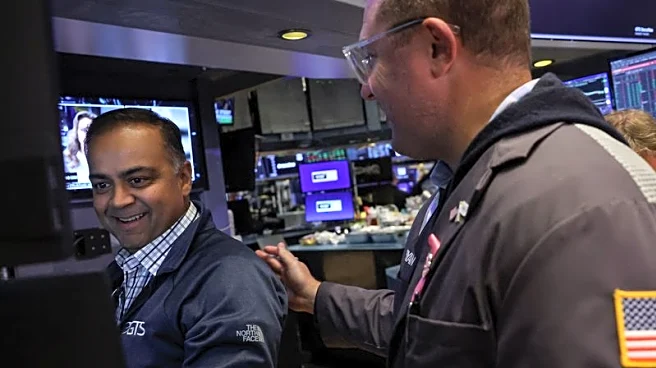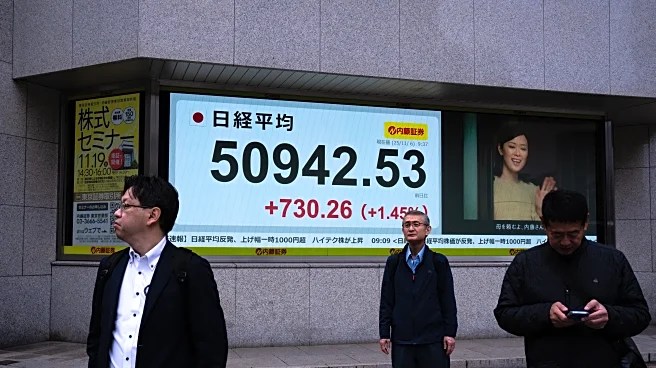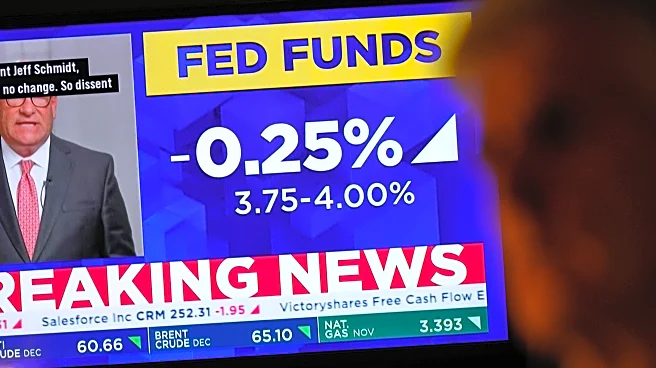What's Happening?
The stock market has quickly regained its footing following a significant decline on Tuesday, which saw the S&P 500 drop by 1.2%. This decline was primarily driven by high-beta semiconductor and AI-levered
tech stocks. Despite the drop, the market has recovered about two-thirds of the losses, with the S&P bouncing off a key threshold. The consumer sector, including airlines and regional banks, showed signs of recovery, while tech stocks like AMD and Meta Platforms also rebounded. Positive macroeconomic indicators, such as better-than-expected ADP private payrolls and ISM Services data, contributed to the market's recovery. Additionally, there is optimism regarding the potential resolution of the government shutdown and the Supreme Court's stance on President Trump's tariffs.
Why It's Important?
The swift recovery of the stock market highlights the resilience of U.S. equities amidst economic uncertainties. The rebound in tech and consumer sectors suggests investor confidence in these industries, despite ongoing concerns about an 'AI bubble' and unresolved Federal Reserve rate-cut decisions. The correlation between stock indexes and Treasury yields indicates that equities are more sensitive to economic growth concerns than inflation. This dynamic is crucial for investors as it influences market strategies and investment decisions. The market's ability to bounce back from a significant decline underscores the importance of monitoring macroeconomic indicators and policy developments that can impact market stability.
What's Next?
Investors will be closely watching the Federal Reserve's upcoming decisions regarding interest rates, as well as developments in the government shutdown and tariff discussions. The consumer sector still has challenges to overcome, and the 'AI bubble' chatter remains a concern. Seasonal factors and earnings growth may provide favorable conditions for continued market stability. However, the market's response to these factors will be critical in determining future trends. Stakeholders should remain vigilant about potential shifts in economic policies and their implications for various sectors.



